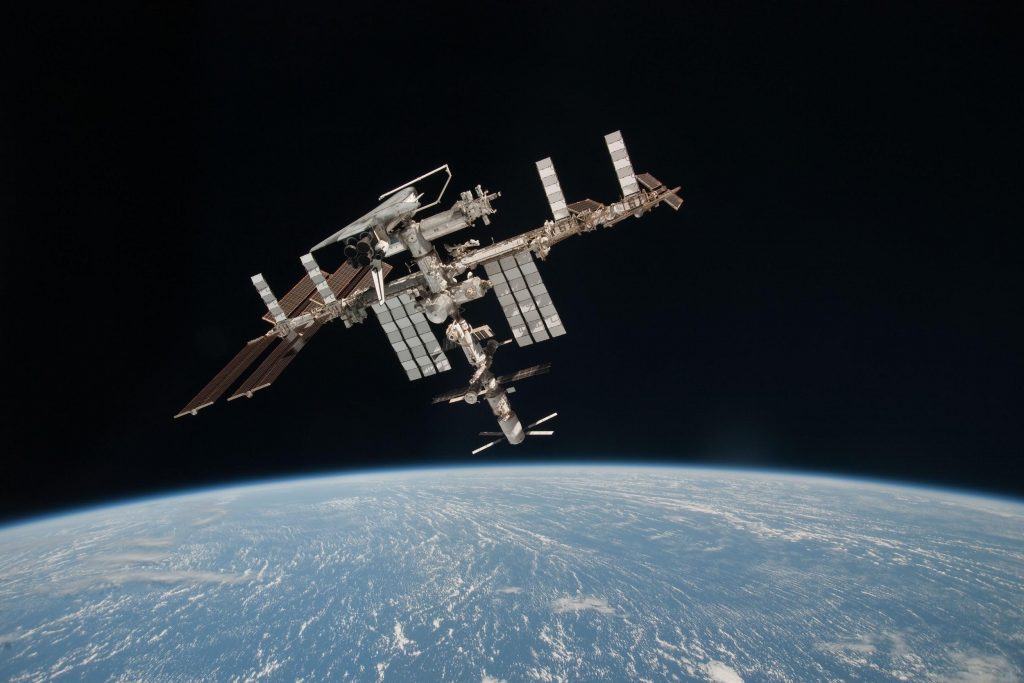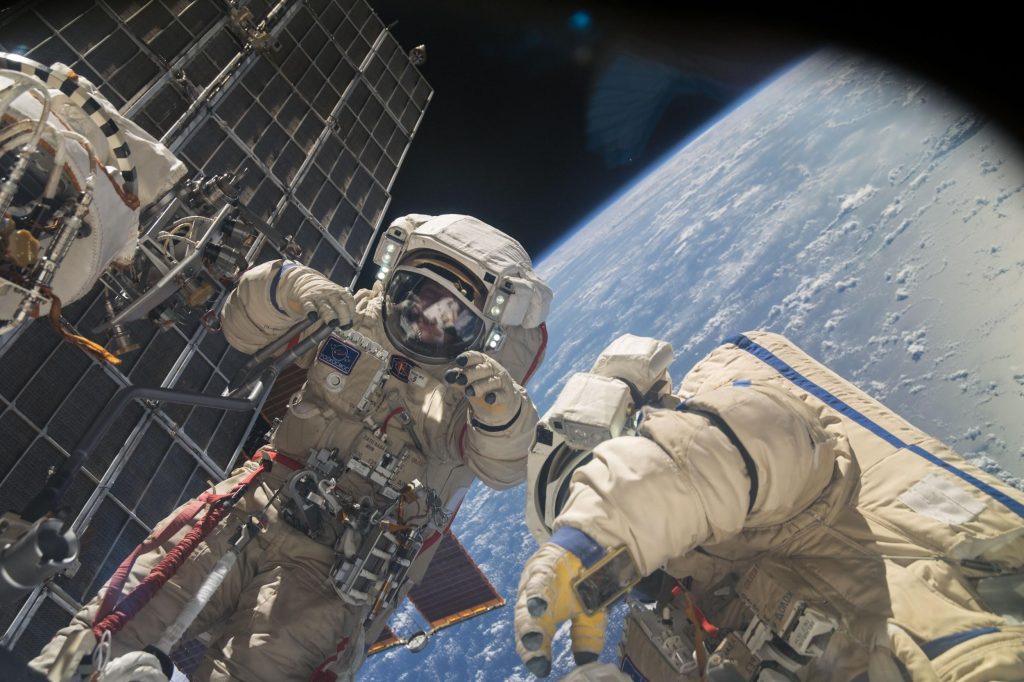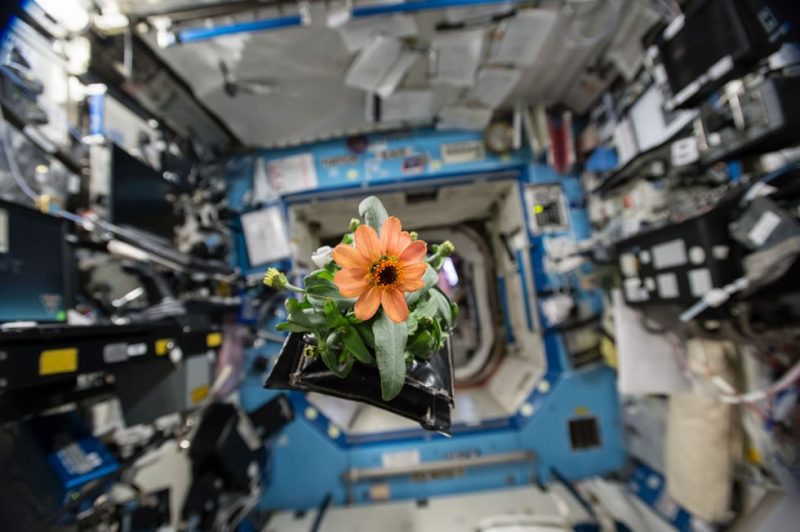InTrans / Jun 26, 2017
Transportation Feats of the World: Journey to the International Space Station
Go! Magazine
 posted on June 26, 2017
posted on June 26, 2017
To get to our next stop along GO! Magazine’s tour of the Seven Great Transportation Feats of the World, you’ll need a rocket, crew of trained astronauts, and space suit.
When appreciating different transportation wonders around the world, it’s important to highlight the ones that are out of this world, too! So this time, we’re visiting the International Space Station, which orbits the Earth and provides a place for astronauts to live and conduct research. Space itself is one of the most fascinating wonders of the world—now imagine living there.
History of the ISS
Today, the International Space Station, or “ISS” for short, is the largest artificial satellite and cost $150 billion to build.
In the late 1990s, international space programs from across the world allied to create something that was out of reach for these individual countries alone. The National Aeronautics and Space Administration (NASA) in the US teamed up with space programs from Canada, Japan, the Russian Federation, and 11 states within the European Space Agency to create the ISS.
The first piece was launched in 1998, delivered by a team of Russian astronauts. One month later, NASA launched the space shuttle Endeavor to add the first piece of the ISS built by NASA, and the crew joined the two sections together. Over time, the space station grew larger as more pieces were added by different crews. For example, solar arrays were added to collect energy from the sun to power it. Robotic arms were also added, which helped with the station’s assembly and assisted the crew members on their space walks.

Two years after assembly began, the station was ready for the astronauts to come work and live in: electrical lines had been run, light fixtures were installed, and even the toilet was ready for astronauts to use. The first live-in crew arrived on November 2, 2000, and space travelers have occupied the station ever since. NASA and its partners helped finish the space station in 2011. Today, it weighs almost one million pounds and is as big inside as a five bedroom house. It has two bathrooms, a gym, and a big bay window with a great view of Earth.
Up in space
It all started shortly after the Hubble Space Telescope was deployed in 1990. The telescope was a $1.5 billion effort for scientists at NASA to capture the universe in greater detail farther out into space. In 1993, NASA discovered the telescope was out of focus and decided to send a crew of astronauts to repair various parts and pieces.
The Hubble Telescope—and the International Space Station that followed—is in a low Earth orbit or LEO, which means it orbits at an altitude between the Earth’s surface and 1,200 miles away from Earth. The ISS orbits the Earth at an altitude of about 220 miles. All human spaceflights have taken place in a low Earth orbit, with the exception of astronauts in the Apollo program, who flew lunar flights in the 1960s and 1970s.
What NASA found out from the Hubble Servicing Missions is this: it was possible to send astronauts out into LEO to do extended repairs that required difficult and tedious assembly. This led to the intuition that more could be accomplished in outer space, and led NASA to believe that they could even accomplish building something as complex and massive as a space station!
Although the pieces were built on earth, the ISS had to be assembled in space—in an entirely different environment. Not only that, but while the astronauts are outside the space station or shuttle, they have to wear layers of gear that provide protection and oxygen. That means all the crew members who helped to assemble the space station were working through various, unique barriers to get the job done.
Feat of transportation
So, now that we’re familiar with the International Space Station and know why it’s such an incredible feat of engineering, what makes it a great feat of transportation engineering?
First and foremost, transportation was a crucial element in putting the space station together—assembly would not have been possible without the numerous space shuttle trips out into the LEO to deliver all the different parts and pieces.
Secondly, the ISS isn’t just a place for astronauts to live. Operating and maintaining it over the last few decades has given NASA crucial information about keeping a spacecraft working for a long time in space and what it takes to operate and maintain something as big as the ISS.

The ISS provides the perfect environment to conduct the research that NASA needs to take the literal “next step for mankind.” The work done will provide future generations of astronauts with the information they need to explore deeper into space.
Journey to the ISS
Would you take a trip out of this world to visit the International Space Station? You could be like many great male and female astronaut crew members of the past who have called the ISS home.
Some day you may even be able to visit as a space tourist! “Space tourism,” the term for space travel for recreational, leisure, or business purposes, was provided by the Russian Space Agency from 2001–2009. Seven different people have been to the ISS as space tourists, with flights priced between $20-$40 million.

Space tourism was halted in 2009 to allow for larger expedition crews. Tourist flights were set to begin again in 2015 but have since been postponed indefinitely. That said, Space Exploration Technologies Corporation (SpaceX) announced in 2017 that they plan on sending two space tourists on a “lunar free-return trajectory” in 2018 aboard the Dragon V2 spacecraft launched by the Falcon Heavy, a reusable super space launch vehicle.
Could we be entering the next era of space travel? Are we gearing up for interplanetary transportation? That would surely be the greatest transportation feat of all time!
References
www.nasa.gov/audience/forstudents/k-4/stories/nasa-knows/what-is-the-iss-k4.html
www.dailymotion.com/video/x366kdc
www.cnn.com/travel/article/engineering-feats/index.html
www.reed.co.uk/career-advice/five-amazing-feats-engineering/
Related links
(Video) When We Left Earth: The NASA Missions: Home in Space: https://www.dailymotion.com/video/x366kdc
Seven ways astronaut Scott Kelly will need to readjust to Earth after 340 days in space: https://jscfeatures.jsc.nasa.gov/mobi.aspx?pageid=375
(Activity) Making space breathable: https://www.jpl.nasa.gov/edu/teach/activity/the-air-up-there-making-space-breathable/
ISS sightings over your city: https://spotthestation.nasa.gov/sightings/
Check out who’s in space now: https://www.nasa.gov/kidsclub/text/nowinspace/Archive.html
By Hannah Postlethwait, Go! Staff Writer